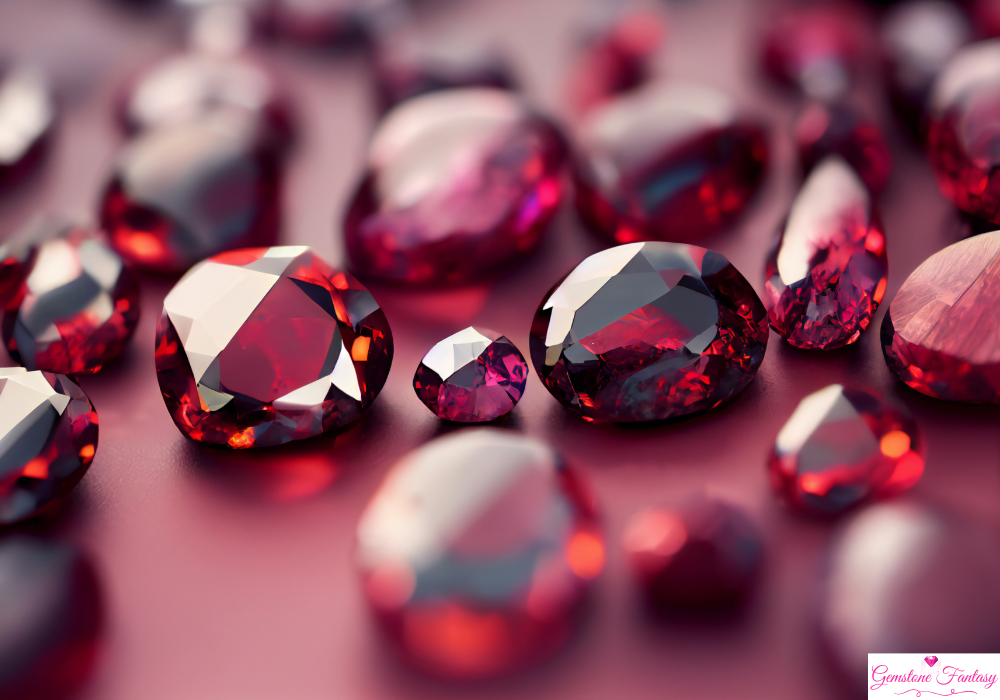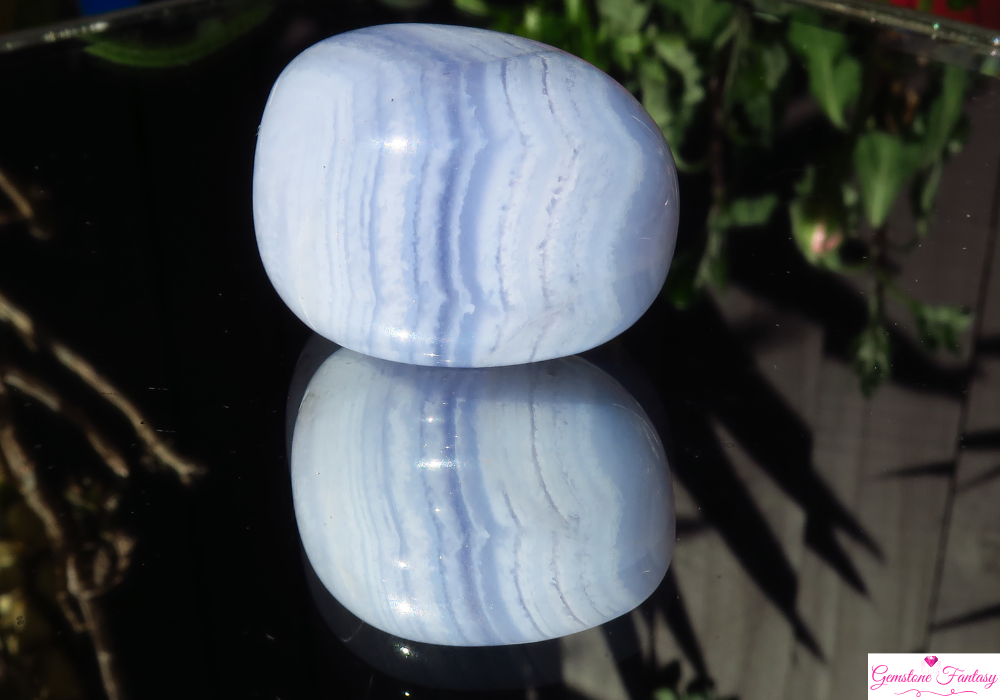Garnet is a diverse group of silicate minerals renowned for their stunning colors and excellent durability. Often associated with deep reds, garnets come in a variety of shades, including green, yellow, orange, and even colorless forms. Due to their beautiful appearance and relative hardness, garnets are highly sought after in jewelry and decorative applications.
Geological Formation
Garnets form in a range of geological environments, typically through metamorphic processes.
- Formation Process: Garnets crystallize from high-temperature and high-pressure conditions, often found in metamorphic rocks such as schist and gneiss. They can also form from igneous rocks and pegmatites.
- Chemical Composition: Garnets are a group of minerals that share a similar crystal structure but have varying chemical compositions. The general formula for garnet is X3Y2(SiO4)3X_3Y_2(SiO_4)_3X3Y2(SiO4)3, where X can be calcium, magnesium, or iron, and Y can be aluminum, iron, or chromium.
- Primary Locations: Significant garnet deposits are found in regions such as India, Brazil, Sri Lanka, and the United States. Each location produces unique varieties with distinct characteristics.
Varieties and Classifications
Garnets are classified into several varieties based on their chemical composition and color.
- Almandine: Known for its deep red color, almandine is one of the most common garnet varieties and is often used in jewelry.
- Pyrope: This variety typically exhibits a vibrant red hue and is prized for its brilliance and clarity.
- Spessartine: Ranging from orange to reddish-brown, spessartine garnets are becoming increasingly popular for their unique colors.
- Grossular: This garnet can be found in various colors, including green and yellow. The green variety is known as tsavorite and is highly valued.
- Andradite: Known for its brilliant colors, andradite garnets can appear in shades of yellow, green, and black.
- Uvarovite: The rarest garnet variety, uvarovite, is bright green and often used in fine jewelry.
Cultural Significance and Folklore
Garnets have a rich history and cultural significance across different civilizations.
- Ancient Civilizations: Garnets have been used since antiquity, with references found in ancient Egyptian and Roman jewelry. They were believed to offer protection and were often buried with the dead to ensure safe passage to the afterlife.
- Healing Properties: Historically, garnets were thought to possess healing properties, believed to improve circulation and detoxify the body. They are associated with revitalization and regeneration.
- Symbolism: Garnets symbolize love and passion, making them a popular choice for romantic gifts, such as engagement rings and anniversary presents.
Birthstone and Zodiac Connections
Garnet is recognized for its significance as a birthstone and its connection to various zodiac signs.
- Birthstone: Garnet is the traditional birthstone for January, symbolizing protection, strength, and health. It is often given as a gift for new beginnings and as a token of friendship.
- Zodiac Sign: Garnet is associated with the zodiac sign Capricorn. It is believed to enhance the positive attributes of Capricorns, promoting ambition, patience, and determination.
Healing and Metaphysical Properties
Garnets are celebrated in metaphysical practices for their energetic properties.
- Emotional Healing: Garnets are thought to inspire love and devotion, promoting emotional balance and alleviating feelings of guilt and anxiety. They are often used in meditation to enhance self-awareness and inner peace.
- Physical Healing: In holistic healing, garnets are believed to stimulate metabolism and improve physical vitality. They are also thought to support the circulatory system and improve overall health.
- Spiritual Growth: Garnets are associated with grounding energy, helping individuals connect with the earth and enhancing their spiritual journey. They are often used in crystal healing to boost confidence and creativity.
Popular Uses in Jewelry and Design
Garnets are widely used in jewelry due to their beauty and durability.
- Earrings and Necklaces: Garnet jewelry, particularly in shades of red and green, is popular in earrings and necklaces, adding elegance to any outfit. The stone’s brilliance makes it a favorite for statement pieces.
- Rings: Garnet rings are often chosen for engagement and wedding rings, especially in red varieties like almandine and pyrope. Their durability ensures they can withstand daily wear.
- Bracelets: Garnet bracelets can feature a variety of styles, from simple beaded designs to intricate settings with other gemstones, offering versatility for both casual and formal occasions.
How to Identify Authentic Gemstones
Identifying genuine garnets involves observing specific characteristics.
- Color and Clarity: Authentic garnets exhibit vibrant colors, with natural stones showing slight inclusions or imperfections. Look for consistent color throughout the stone.
- Hardness: Garnets have a Mohs hardness of 6.5 to 7.5, making them relatively hard and resistant to scratches. This durability is a good indicator of authenticity.
- Refractive Index: The refractive index of garnets typically ranges from 1.72 to 1.94. A gemologist can use specialized tools to measure this and confirm authenticity.
Tips for Caring and Storing
Proper care is essential to maintain the beauty and longevity of garnet jewelry.
- Cleaning: Clean garnet pieces using warm, soapy water and a soft cloth. Avoid harsh chemicals and ultrasonic cleaners, which can damage the stone.
- Storage: Store garnet jewelry separately to prevent scratches from harder stones. Use a soft pouch or lined jewelry box to protect them from damage.
- Handling: While garnets are durable, they should be handled with care to avoid chipping or scratching. Avoid exposing them to extreme temperature changes.
Market Trends and Pricing
The market for garnets has seen notable trends influenced by fashion and demand.
- Pricing: Prices for garnets can vary significantly based on color, clarity, and size. Red garnets are generally more affordable, ranging from $20 to $100 per carat, while rare varieties like tsavorite can command prices of several hundred to thousands of dollars per carat.
- Market Trends: The demand for unique garnet varieties, such as spessartine and tsavorite, is on the rise, driven by consumers’ interests in distinctive colors and designs. This has led to an increase in prices for high-quality stones.
Final Thoughts
Garnet is a gemstone that embodies beauty, history, and versatility. Its stunning colors and cultural significance make it a beloved choice among jewelry enthusiasts and collectors. Whether worn for its aesthetic appeal, its emotional and healing properties, or its symbolic meanings, garnet continues to captivate those who appreciate its unique charm and historical legacy.

















